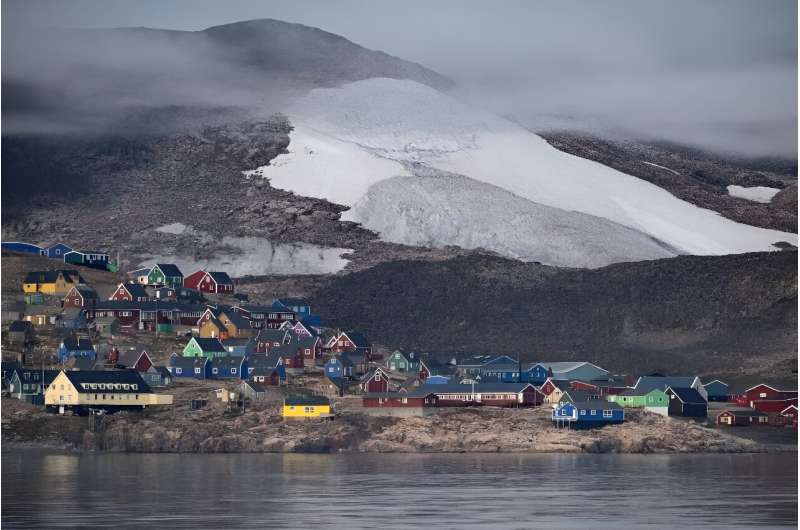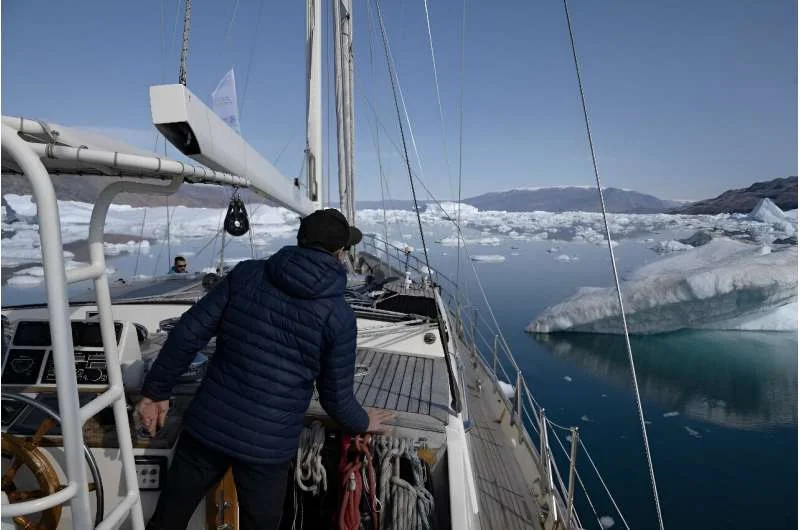With craggy red mountains rising on either side, a sailboat carrying scientists deftly navigates the icebergs that fill Greenland’s Scoresby Fjord as it rushes to document this little-studied region at the forefront of climate change. Sailing to the east coast of the country after the hottest July ever recorded at Summit Camp at the top of the Greenland ice sheet, the expedition team is keenly aware of the urgency.
“The risk we have here is the disappearance of the entire ecosystem,” Eric Marechal, research director of the French National Center for Scientific Research (CNRS), told AFP on the Kamak sailboat.
Besides icebergs that cover more than half of the fjord in some areas, scientists also need an armed escort to guard against polar bears. But facing a challenging environment for researchers is a risk worth taking to gain access to one of the world’s most isolated ecosystems.
“We’re seeing global warming enter a really strong phase here. That’s why we need to document it,” says expedition leader Vincent Hiller.
Organized by the French volunteer initiative Greenlandia, the expedition aims to understand the impact of climate change on Scoresby Fjord and its inhabitants. Frozen in ice for eleven months of the year and still poorly explored, the planet’s largest fjord system is difficult to maneuver even for an experienced crew.
“There’s a huge gap between what we see on maps and reality, so we need to proceed with caution,” says Kamaka captain David Delample.
The hum of the glaciers surrounding the fjord fills the air as warm sunlight follows the melting snow on the edge of the icebergs. Some icebergs are sculpted monoliths of blue ice rising above the sea, higher than the Arc de Triomphe in Paris, while others are smooth mounds with cascading layers of white snow.
The boat is in danger of being crushed by giant blocks of ice, and the sound of frozen giants crashing into the ship’s hull makes for a disturbing dream. The only human settlement within a 500-kilometer (310 mi) radius is the Greenland town of Ittokkortoormiit, with a population of about 300, at the mouth of the fjord.
Knowing that the fjord will freeze again by mid-September, scientists are working against time.

“The next generation of science will witness mass melting in Greenland,” says Hiller.
It is important that the team fills the knowledge gap in the study of this remote region before it changes to shape policy in the future.
“We’ll give them as many examples as possible,” says Giler. Source
Source: Port Altele
